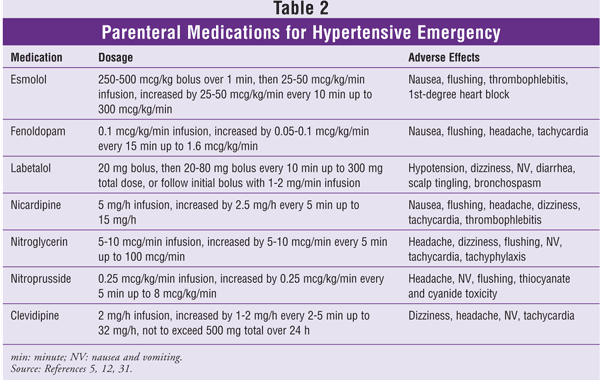Labetalol infusion for refractory hypertension causing severe hypotension and bradycardia: an issue of patient safety, Patient Safety in Surgery
Por um escritor misterioso
Descrição
Incremental doses of intravenous labetalol are safe and effective and, at times, such therapy may need to be augmented by a continuous infusion of labetalol to control severe hypertension. Continuous infusions of labetalol may exceed the recommended maximum daily dose of 300 mg on occasion. We report a case in which hypertension occurring after an abdominal aortic aneurysm repair, initially responsive to intermittent intravenous beta-blockade, became resistant to this therapy leading to the choice of an intravenous labetalol infusion as the therapeutic option. The labetalol infusion resulted in a profound cardiovascular compromise in this postoperative critically ill patient. While infusions of labetalol have successfully been used, prolonged administration in the intensive care unit requires vigilance and the establishment of a therapeutic rationale/policy for interventions, such as the ready availability of glucagon, β-agonists, phosphodiesterase inhibitors, insulin, and vasopressin when severe cardiovascular depression occurs.

Frontiers Traumatic Brain Injury—A Review of Intravenous Fluid Therapy

Cancers, Free Full-Text

The vital signs and the cumulative labetalol dose over time. MAP = mean

Hemodynamic Safety of Continuous Infusion Labetalol Versus Esmolol Combination Therapies for Type B Aortic Dissections

LABETALOL HYDROCHLORIDE INJECTION, USP

European Stroke Organisation (ESO) guidelines on blood pressure management in acute ischaemic stroke and intracerebral haemorrhage - Else Charlotte Sandset, Craig S Anderson, Philip M Bath, Hanne Christensen, Urs Fischer, Dariusz Gąsecki

JCM, Free Full-Text

Management of Hypertensive Crises

Hypertension in Pregnancy
de
por adulto (o preço varia de acordo com o tamanho do grupo)






